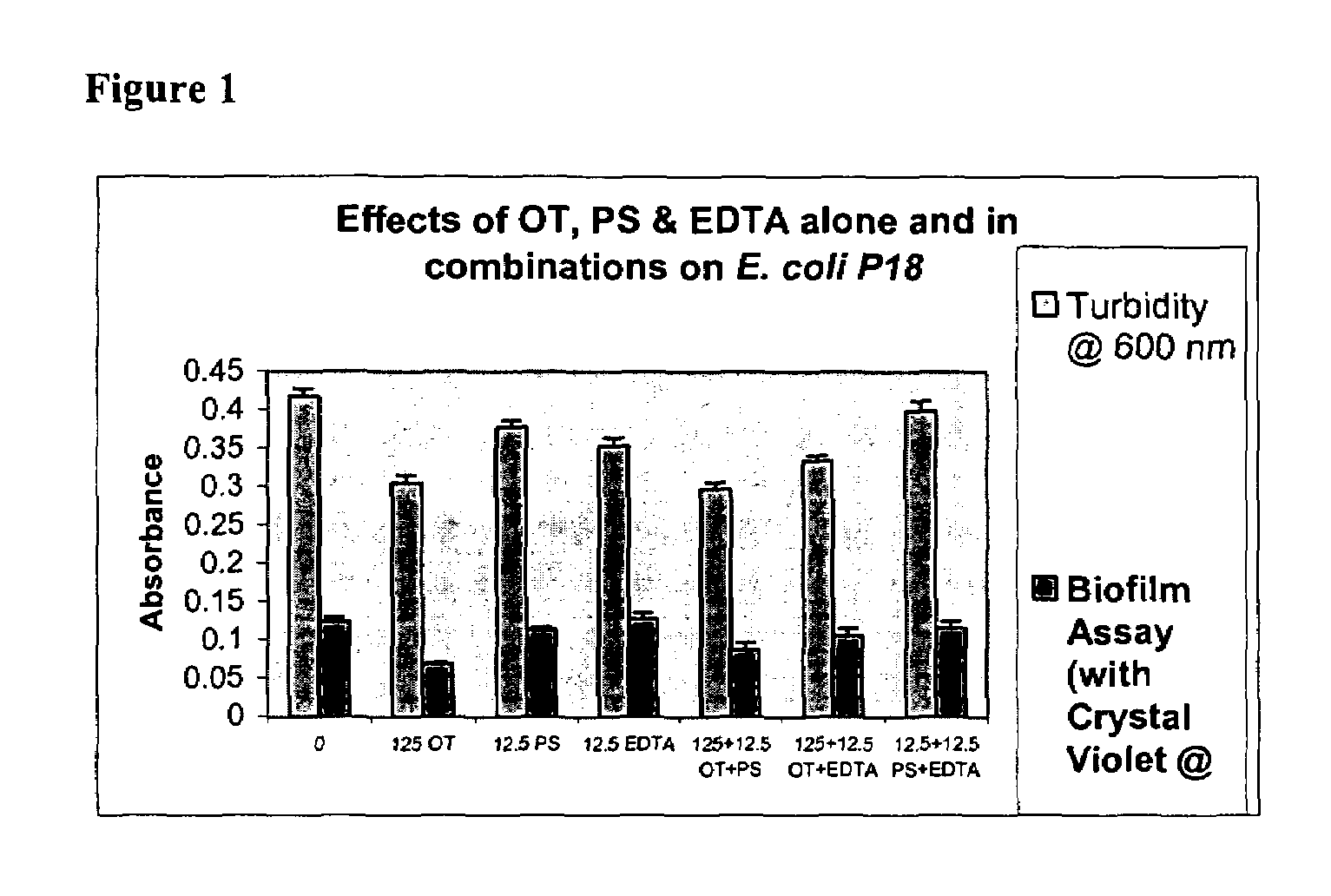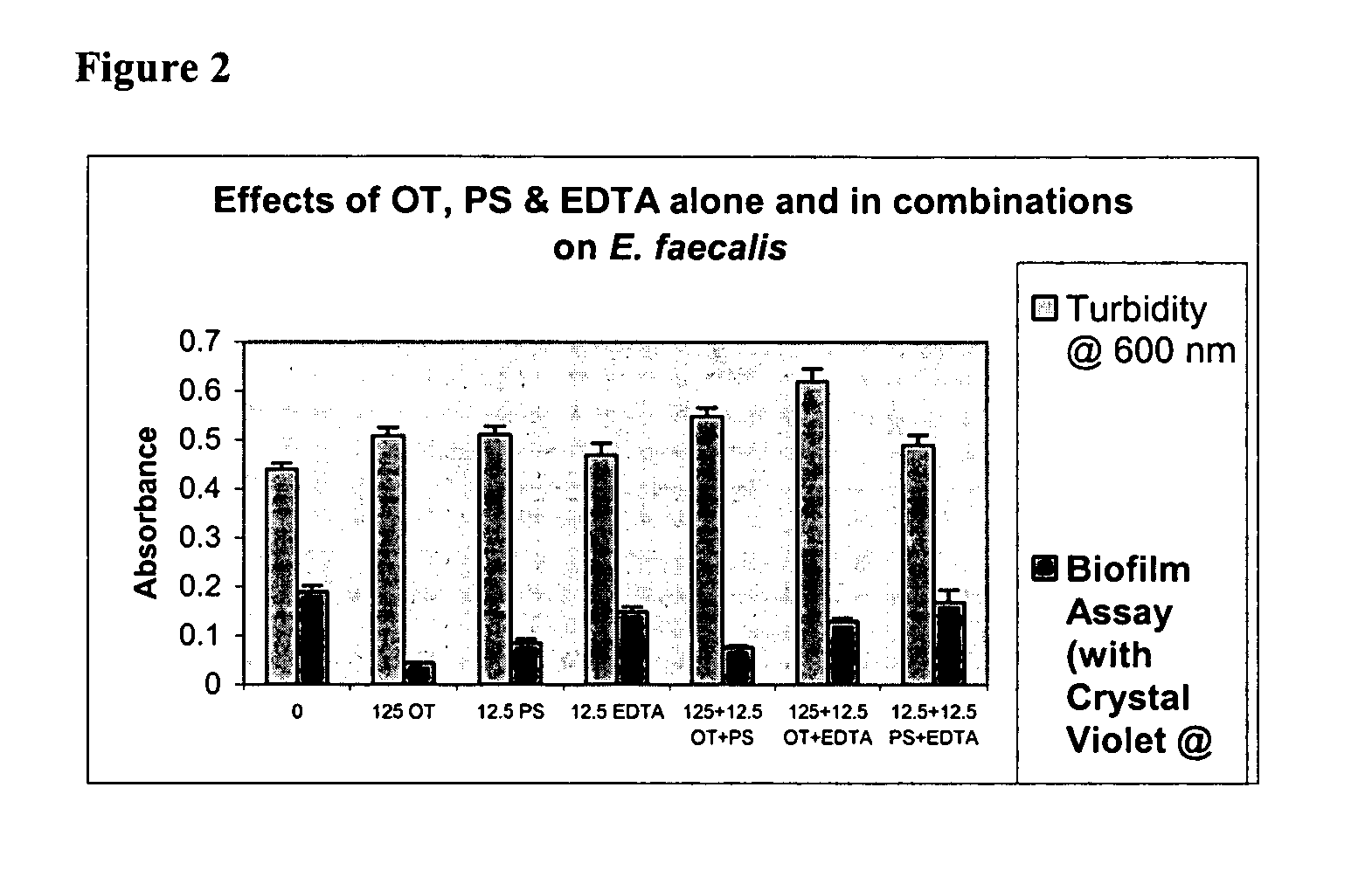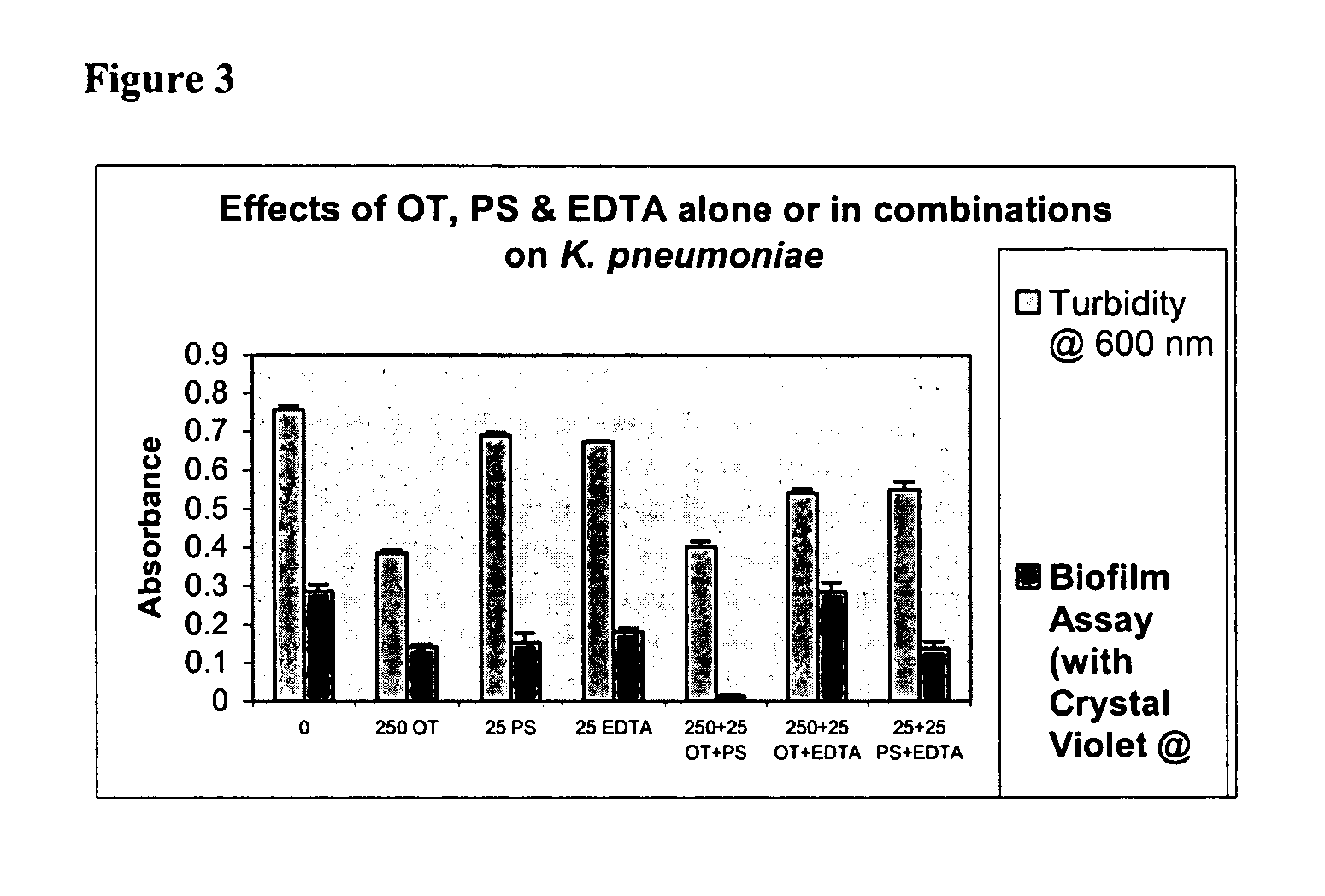Synergistic antimicrobial compositions and methods of inhibiting biofilm formation
a technology of antimicrobial compositions and compositions, applied in the direction of peptide sources, prostheses, catheters, etc., can solve the problems of difficult or impossible elimination, limited drug incorporation mass, and public health problems
- Summary
- Abstract
- Description
- Claims
- Application Information
AI Technical Summary
Benefits of technology
Problems solved by technology
Method used
Image
Examples
example 1
Effects of Ovotransferrin (OT), Protamine Sulfate (PS) and EDTA Alone and in Combinations on Biofilm Formation in Catheter-associated Bacteria
[0062]Catheter-associated bacterial strains used: E. coli P18, Proteus mirabilis, Pseudomonas aeruginosa, Klebsiella pneumoniae, Enterococcus faecalis and Staphylococcus epidermidis
Method:
[0063]Base Formulas for Ovotranferrin (OT), Protamine Sulfate (PS) and EDTA were prepared as described in Table 1 below.
[0064]
TABLE 1Base Formulas for Screening (μg / ml of sterile water)CompoundABCDEOT + PS 125 + 12.5250 + 25500 + 501000 + 1002000 + 200OT + EDTA 125 + 12.5250 + 25500 + 501000 + 1002000 + 200PS + EDTA12.5 + 12.5 25 + 25 50 + 50 100 + 100 200 + 200OT + PS + EDTA 125 + 12.5 + 12.5250 + 25 + 25500 + 50 + 501000 + 100 + 1002000 + 200 + 200
[0065]Studies were done to test biofilm formation in microtiter plate wells. Quantitative biofilm assay for catheter-associated bacteria was standardized following the procedure described by Jackson, et al. (J. B...
example 2
Effects of Synergistic Composition on Biofilm Formation by Catheter-associated Bacteria in Urinary Catheter
[0068]Catheter-associated bacterial strains used: E. coli P18, Proteus mirabilis, Pseudomonas aeruginosa, Klebsiella pneumoniae, Enterococcus faecalis and Staphylococcus epidermidis
Method:
[0069]To visualize biofilm formation in catheters, 35 μl of an overnight culture of each of the above bacterial strain was inoculated into 700 μl of medium and injected into clear vinyl urethral catheters overnight at 26 or 37° C. with and without composition consisting of 1000 μg ovotransferrin / ml +100 μg protamine sulfate / ml+100 μg EDTA / ml. The catheters were capped at both ends. The media and growth conditions were as described above for microtiter plate assay. Cultures were removed to determine the growth at 600 nm and the catheters were rinsed with distilled water. After drying at room temperature for 15 min., 700 μl of 1% crystal violet was added to the catheters for 20 min. The stained...
example 3
Effect of Synergistic Composition on the Viable Cell Counts of Catheter-associated Bacteria
[0072]Catheter-associated bacterial strains used: E. coli P18, Proteus mirabilis, Pseudomonas aeruginosa, Klebsiella pneumoniae, Enterococcus faecalis and Staphylococcus epidermidis
Method:
[0073]Viable cell counts of catheter-associated bacterial strains were determined following a standard serial dilution plating method. The cultures of all six bacterial strains were grown in the presence and absence of a synergistic antimicrobial composition (OT+PS+EDTA=1000+100+100 μg / ml) using CFA medium (for gram-negative strains) and TSB (for gram-positive strains) at 26° C. and 37° C., respectively for 24 hours and serially diluted (10-fold dilution) with sterile water. The number of dilutions depended on the initial density of the cell suspension. Plated out 100 μl of each dilution on LB agar or Tryptic Soy agar plates in duplicates. The aliquot over the agar plate surface was spread with a sterile pla...
PUM
| Property | Measurement | Unit |
|---|---|---|
| time | aaaaa | aaaaa |
| temperature | aaaaa | aaaaa |
| temperature | aaaaa | aaaaa |
Abstract
Description
Claims
Application Information
 Login to View More
Login to View More - R&D
- Intellectual Property
- Life Sciences
- Materials
- Tech Scout
- Unparalleled Data Quality
- Higher Quality Content
- 60% Fewer Hallucinations
Browse by: Latest US Patents, China's latest patents, Technical Efficacy Thesaurus, Application Domain, Technology Topic, Popular Technical Reports.
© 2025 PatSnap. All rights reserved.Legal|Privacy policy|Modern Slavery Act Transparency Statement|Sitemap|About US| Contact US: help@patsnap.com



